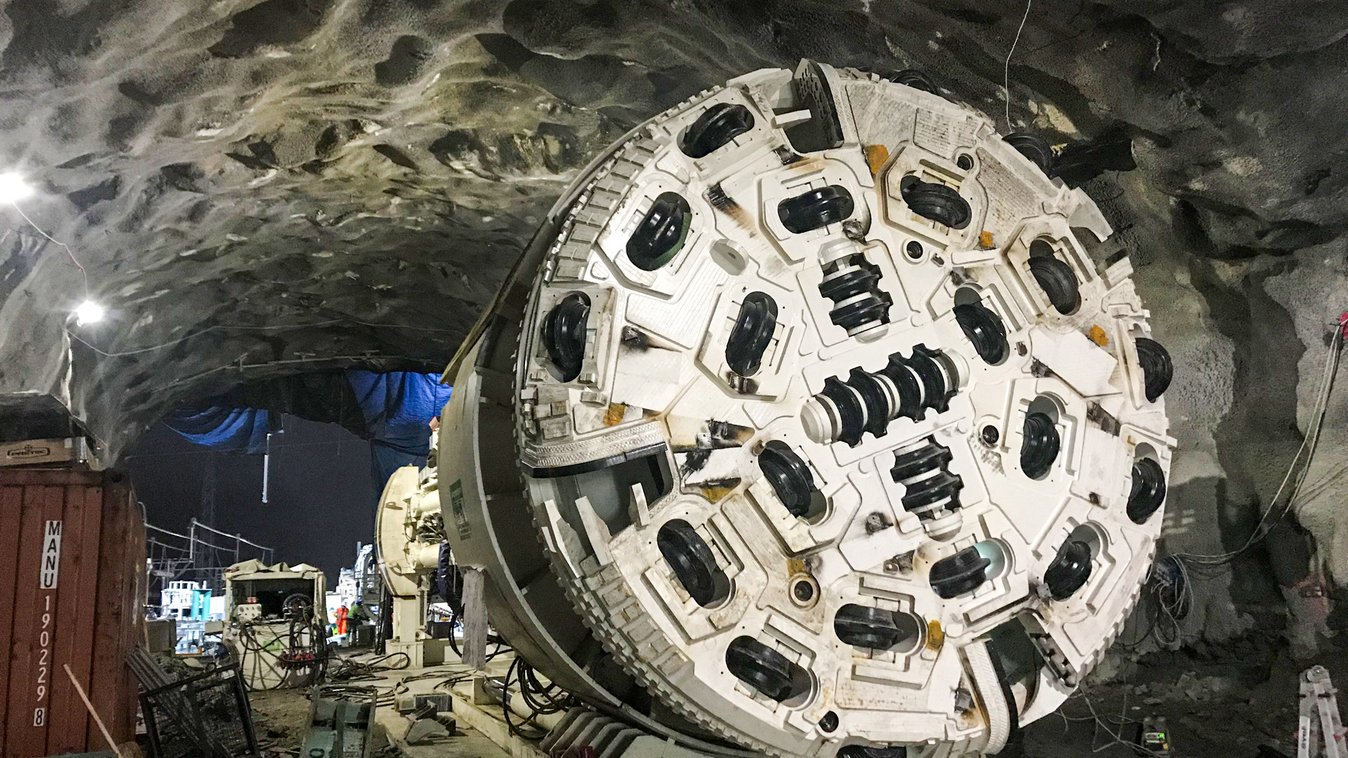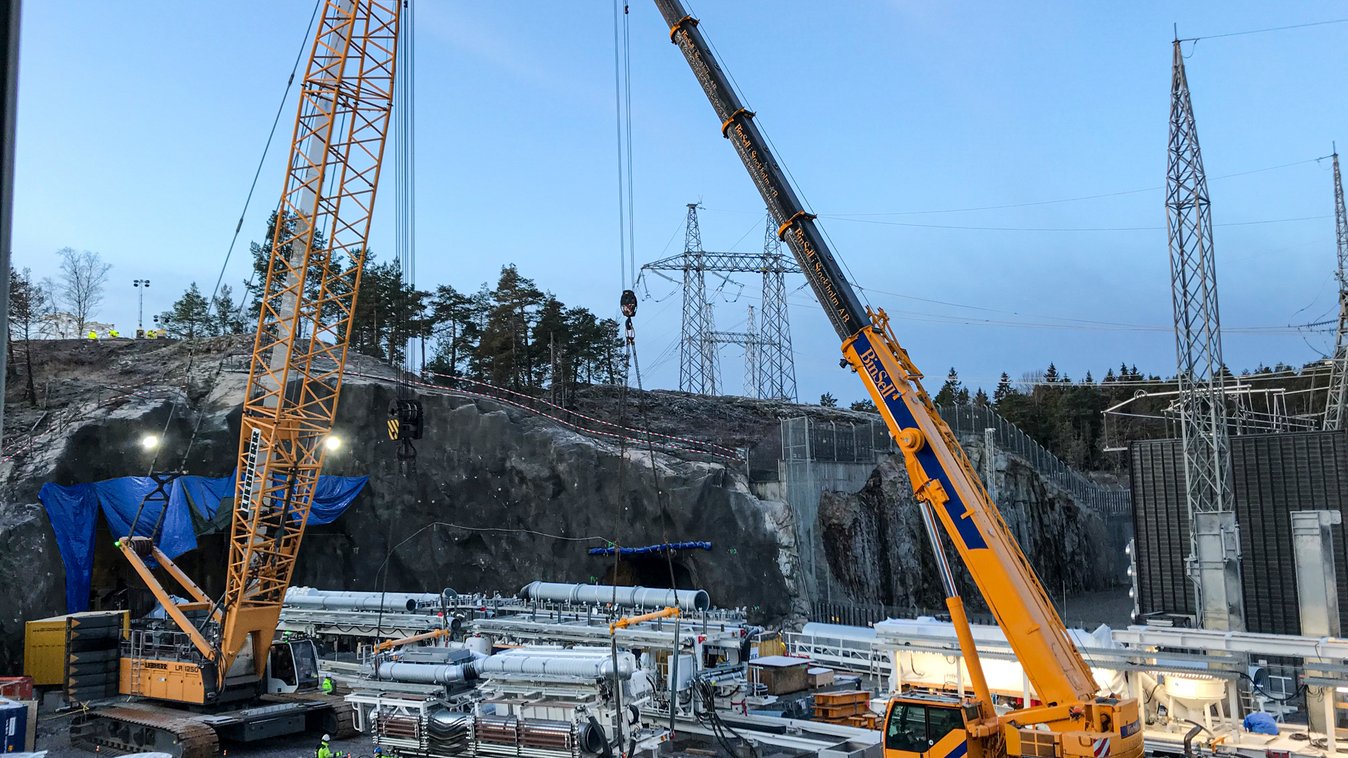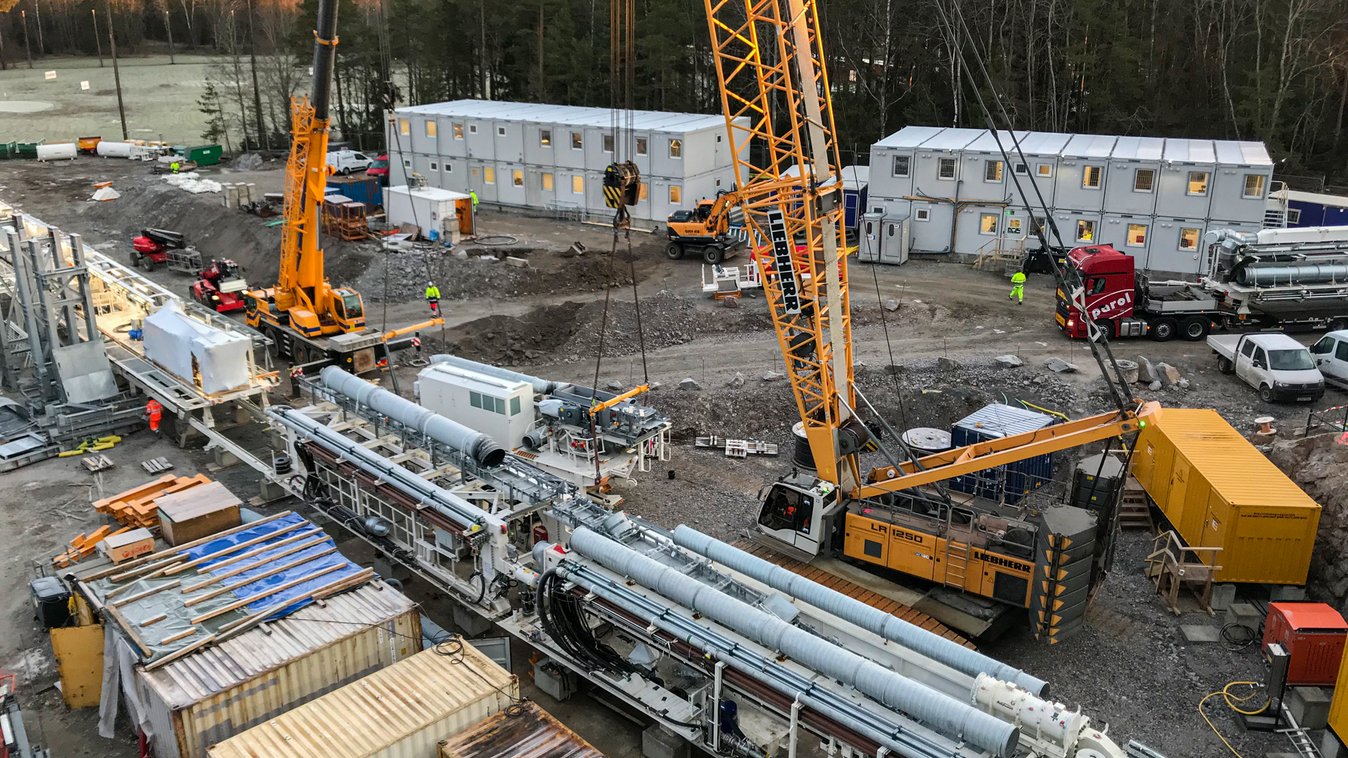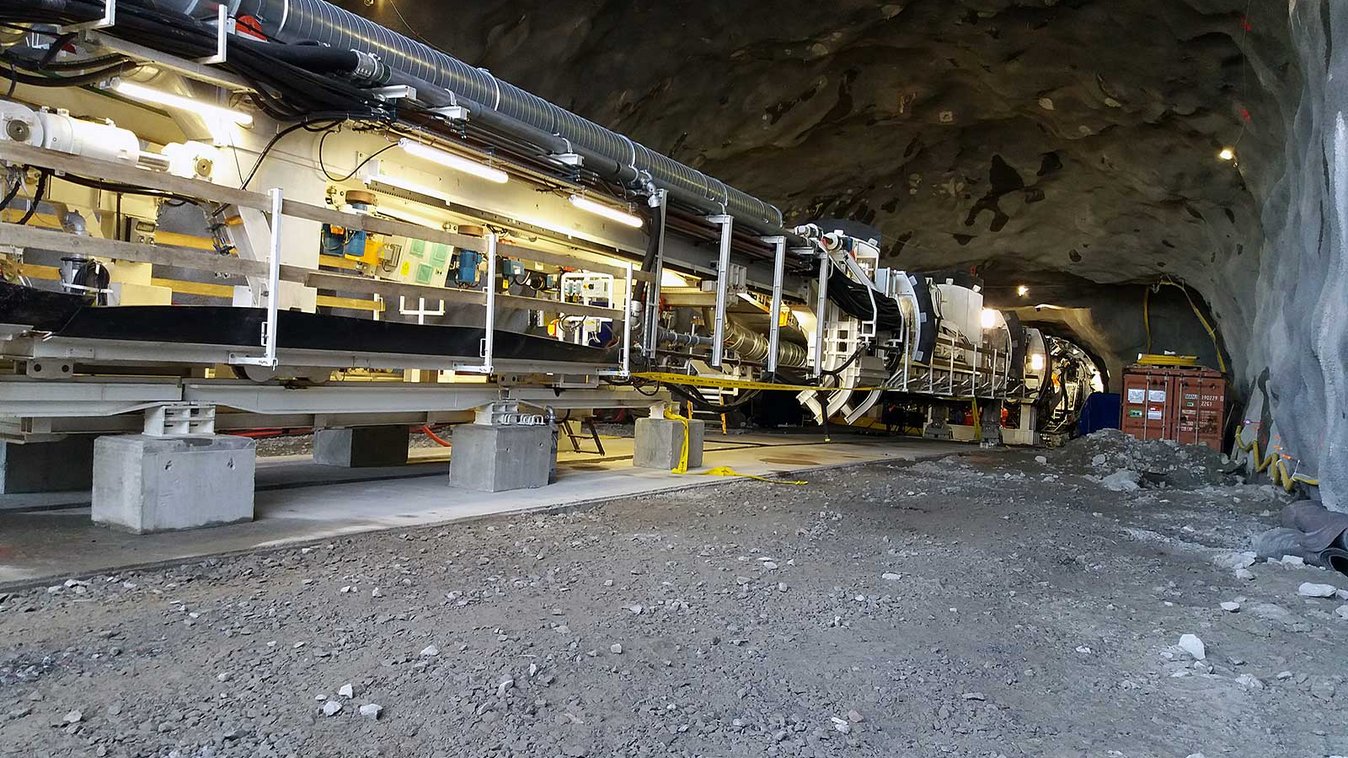



Citylink Anneberg-Skanstull Tunnel
Short description
As the second of four phases of the so-called City Link Project, the Anneberg-Skanstull Tunnel serves to improve the power supply in the Greater Stockholm area. At a length of around 14 km and a diameter of 5 m, the tunnel is being driven about 50 - 100 m below the Swedish capital using a tunnel boring machine.
The project
The City Link project also includes six ventilation shafts, elevator systems as well as the con-struction of technical buildings for electrical equipment in the Anneberg area and at the shafts. Completion is scheduled for 2024. The aim of the City Link Project is to connect the north (Upplands Väsby) with the south (Huddinge) of Stockholm with a new high voltage power line. Among other things, it leads under the University of Stockholm, the Royal Technical High School (KTH) and under the Strömmen, a basin of the Baltic Sea. Implenia Infrastructure experts and the local Swedish business unit, Implenia Sverige, are working together on the contract. umfasst zudem sechs Lüftungsschächte, Aufzugsanlagen sowie die Erstellung von Technikgebäuden für elektrotechnische Ausstattung im Bereich Anneberg und bei den Schächten. Die Fertigstellung erfolgt bis 2024. Das Ziel des City Link Projekts ist es, den Norden (Upplands Väsby) mit dem Süden (Huddinge) von Stockholm mit einer neuen Hochspannungsleitung zu verbinden. Unter anderem führt er unter der Universität Stockholm, der Königlichen Technischen Hochschule (KTH) und unter dem Strömmen, einem Becken des baltischen Meers, hindurch. Für den Auftrag arbeiten auf Seiten Implenia Experten des Bereichs Infrastructure und der lokalen schwedischen Einheit Implenia Sverige Hand in Hand.
See press release.
Challenges
The challenges faced by the construction of the Anneberg-Skanstull Tunnel include the extremely hard rock strength of more than 300 MPa uniaxial compressive strength, the sealing of the tunnel by means of rock injections at water pressures of up to 100 bar from the TBM.
There are also high requirements to comply with the specified noise emissions and vibrations in the densely populated area of Stockholm, which is why areas with limited working hours must be considered.
There is hardly any experience in Sweden of the Gripper TBM tunnelling method as is being used at the Anneberg-Skanstull Tunnel, which is why there are significant challenges in recruiting sufficiently experienced personnel.
Sustainability
Work in the immediate vicinity of the Strömmen sea basin and among the upper districts of Öster- and Södermalm are subject to strict environmental regulations because of the variety of historical and sensitive buildings such as university buildings, museums, galleries or recording studios in the area.
Further information
Key Figures
- Realization 2019 – 2024
- Total length ~ 14 km
- Excav. cross-section 19.62 m²
- Geology Metagreywacke, gran-ite, gneiss, metabasite
Implenia on Site
Implenia Construction GmbH
Landsberger Straße 290 a, D-80687 München
Implenia Sweden AB,
Liljeholmsstranden 5, SE-11743 Stockholm
Scope of works
Commercial management
Performed services
Tunnelling works
Construction methods
- TBM tunnel for power lines in hard rock using a Gripper TBM and shotcrete reinforcement
- L = 1 x 13.5 km, A = 19,62 m², D = 5.0 m
- Conventional drill & blast-tunnel for power lines in the area of a fault zone under the sea
- L = 1 x 250 m, A = 24.0 m²
- Two ventilation / access shafts in the drill & blast method incl. caverns
- T = 60 and 100 m, A = ca. 40.0 m²
- Four ventilation shafts in the raise-boring method
- Depth = 40 – 80 m, A = 12.60 m², D = 4.0 m
Project Participants
Client
Svenska Kraftnät (Swedish National Grid)
Planner
Tyréns, Nitro Consult, Sweco (tender documents) / WSP (execution planning)
Consortium
Implenia & Hochtief Infrastructure

